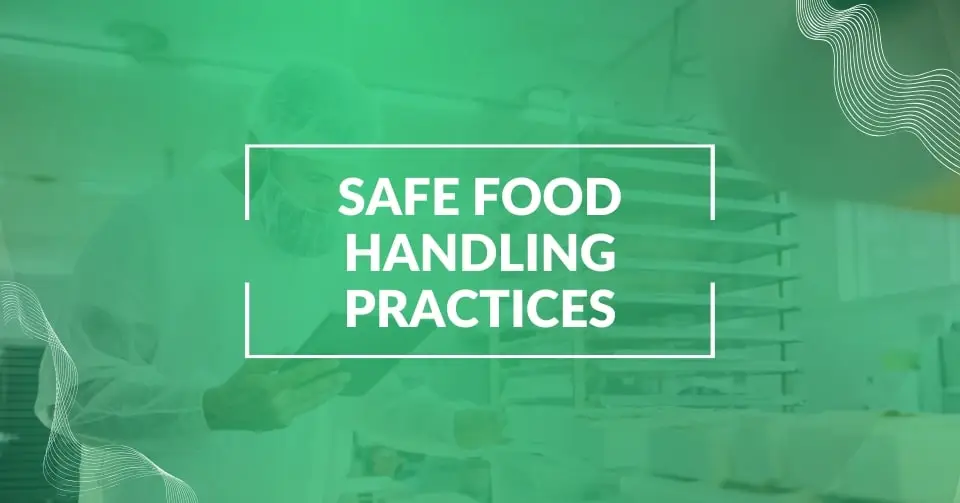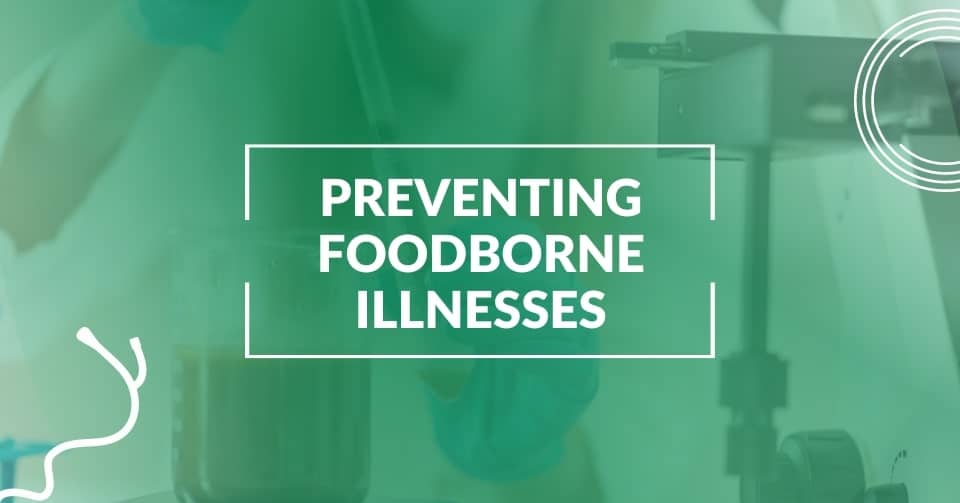Food safety is most important when it comes to the food Industry. It impacts public health and plays a key role in meeting regulations and maintaining a brand’s reputation. Embracing safe food handling practices is crucial for preventing contamination, reducing the risk of foodborne illnesses, and ensuring high-quality standards throughout the entire food production, processing, and distribution chain.
This detailed guide walks you through the top practices for handling food safely. It also dives into how advanced food safety management systems can assist businesses in staying compliant with regulations, improving food quality, and making inspection processes more efficient.
What is the Importance of Safe Food Handling?
Food safety is a top priority for consumers, businesses, and regulatory agencies. When proper food handling is overlooked, it can lead to contamination by bacteria, viruses, parasites, and chemical hazards, which can cause serious health issues.
A report from the U.S. Government Accountability Office (GAO) in 2025 highlighted a troubling reality: even with more than 30 federal laws and 15 agencies dedicated to food safety, foodborne illnesses continue to pose a significant threat in the U.S.
Each year, around 10 million people fall ill, leading to 53,300 hospitalizations and about 900 deaths, all due to pathogens like Salmonella, E. coli, and Listeria. One of the key problems pointed out was the disjointed oversight system.
While agencies such as the CDC, FDA, and USDA’s FSIS have both individual and collaborative goals aimed at curbing outbreaks, many of their targets remain unmet. For example, FSIS set a goal to cut Salmonella in poultry by 4%, but instead, there was a staggering 22% increase.
The situation is made even worse by underreporting, a lack of resources at the state level, and the absence of baseline metrics. The study’s findings highlighted the pressing need for a national food safety strategy. The GAO suggests that a unified federal approach could enhance efficiency, lower illness rates, and potentially save around $75 billion each year in economic losses linked to foodborne diseases.
By implementing robust food handling protocols, businesses can minimize these risks and ensure that food remains safe from the moment it’s produced until it reaches the consumer.
“There is no substitute for proper food handling and preparation. It is the key to preventing foodborne illnesses.”
— Catherine Templeton, Former Director, South Carolina Department of Health and Environmental Control.
Key Principles of Safe Food Handling
There are four principles for Safe Food Handling: cleaning, separating, cooking, and chilling. These steps are necessary for preventing cross-contamination and ensuring food quality.
1. Cleaning and Sanitization
Maintaining proper hygiene is crucial in food handling to get rid of harmful pathogens. Food handlers should wash their hands thoroughly with soap and water before and after handling food, especially when switching between raw and cooked ingredients. Regular sanitizing of surfaces, utensils, and equipment is necessary to prevent bacterial buildup. For more details check our article about cleaning and sanitizing procedures in the food industry.
With FoodReady’s checklist and automatic reminders, businesses can ensure frequent cleaning programs and remain in line with food safety rules.
2. Preventing Cross-Contamination
Cross-contamination occurs when harmful germs move from one surface or food item to another. To prevent this from happening, store raw meats, poultry, and seafood separately from foods that are ready to eat.
Food handlers can use color-coded cutting boards and utensils to separate raw and cooked items. FoodReady’s digital tracking system is an excellent tool for businesses to implement and monitor cross-contamination prevention strategies, helping lower the chances of foodborne illnesses.
3. Safe Cooking Temperatures
Cooking food to the proper internal temperatures is vital for killing harmful bacteria. Each type of food has a specific temperature that must be reached to ensure it’s safe to eat. For instance, poultry should be cooked to an internal temperature of 165°F, while ground beef needs to reach at least 160°F.
FoodReady offers real-time temperature monitoring and automated logs to help ensure cooking standards are consistently met. This reduces human errors and guarantees that food is cooked thoroughly every time.
4. Proper Food Storage and Refrigeration
Proper food storage is key to slowing bacterial growth and keeping it fresh. Ensure your refrigerators are set to 40°F or lower and your freezers at 0°F or below. It’s essential to handle perishable items correctly, using the FIFO (First In, First Out) method to ensure that older items are used up before the newer ones.
FoodReady offers handy inventory management tools that help businesses track expiration dates. These tools can significantly reduce food waste and improve safety measures.
Best Practices for Food Handlers
Food handlers are vital in keeping our food safe. Industries need the proper training and commitment to industry standards to foster a safer food environment and reduce risks.
Here are the best practices for food safety:
1. Personal Hygiene and Protective Equipment
The food handler needs to focus on personal hygiene. This means wearing clean uniforms, hairnets, gloves, and masks when necessary. Leaving jewelry and loose goods is also a good idea to avoid contamination.
FoodReady offers training modules and compliance tracking for food handlers, ensuring that best practices are always followed.
2. Safe Food Receiving and Inspection
Every step in the food supply chain comes with its set of risks. This is why it is essential for businesses to carefully inspect all food products for damage or any sign of contamination. Inspecting food inventory with advanced software, which is easy to log in and make reports for regulatory compliance, ensures that only safe, high-quality materials make it to the production line.
3. Proper Waste Management
Managing waste is crucial to maintaining a clean and safe environment in food handling. Businesses must establish clear, maintained segregation policies to ensure that food waste, packaging materials, and hazardous substances are disposed of appropriately.
FoodReady provides digital waste-tracking solutions that assist food manufacturers and restaurants in managing their waste more efficiently and sustainably.
Regulatory Compliance and Food Safety Standards
Food manufacturers and food service businesses face a complex web of strict regulations, such as the FDA Food Code, HACCP (Hazard Analysis and Critical Control Points), FSMA (Food Safety Modernization Act), and ISO 22000. These guidelines are designed to ensure food safety throughout the entire supply chain.
Automating food-grade documentation, managing audits, and tracking corrective actions simplifies compliance. With a real-time dashboard, companies can monitor their food safety performance and address compliance issues before serious problems occur.
The Role of FoodReady in Enhancing Food Safety Management
FoodReady is a food safety software solution designed to help businesses stay compliant, streamline inspections, and effectively manage risks. Here’s how it supports food manufacturers and handlers:
- Automated Compliance Tracking: Keeps tabs on food safety regulations and notifies businesses about necessary updates and renewals.
- Digital Audit Management: Makes food safety audits easier with automated reports and checklists.
- Temperature Monitoring: The system guarantees that food is stored and cooked at safe temperatures through real-time tracking.
- Incident and Recall Management: Swiftly identifies and addresses safety issues, minimizing the impact of recalls.
- Training and Certification Management: Ensures food handlers are up to speed with the latest food safety protocols.
By incorporating FoodReady into daily operations, industries can improve food safety management, lower risks, and maintain the trust of their consumers.
For example, maintaining consistent food safety protocols was quite the task at Up At Dawn Bakery, a mini muffin manufacturer that caters to some big-name brands. With about 100 employees hustling in a fast-paced production environment, adhering to food safety standards was absolutely crucial.
By bringing in FoodReady, the bakery streamlined its Hazard Analysis and Critical Control Points (HACCP) plans, automated daily logs, and utilized smart checklists for sanitation and operational tasks. This integration enhanced traceability and batch management and ensured better compliance with regulatory requirements.
The switch to FoodReady enhanced Up At Dawn Bakery’s food safety practices and boosted confidence among clients and regulatory agencies.
We’ll be eager to help you streamline your food handling practices to produce safe and quality food. Book a demo to learn more!
Conclusion
Proper food handling is absolutely necessary to keep everyone safe. It helps businesses follow the rules and contributes significantly to their success in the food industry.
Companies can significantly reduce the risk of contamination and foodborne diseases by embracing best practices in cleaning, storage, preparation, and employee training. In addition, leveraging technology such as FoodReady promotes food safety efforts by automating compliance, inspection, and risk management.
Investing in strong food safety solutions is important to ensure prolonged stability and earn consumer trust. At FoodReady, we can help you set and achieve your food safety goals. Contact us to start your compliance journey now!
Safe food handling is essential because it helps prevent contamination, reduces the risk of foodborne illnesses, and ensures that businesses comply with health regulations, ultimately protecting consumers and businesses.
The four main principles are cleaning, separating, cooking, and chilling. Each plays a vital role in maintaining food safety and avoiding cross-contamination.
FoodReady simplifies food safety management by automating tracking, conducting audits, and monitoring temperature and events, making it easier and more efficient for businesses.
To ensure harmful bacteria are killed, poultry should be cooked to 165°F, ground meats to 160°F, and seafood to 145°F.
Food businesses should use separate cutting boards, properly store raw and cooked foods, and follow strict hygiene practices to prevent cross-contamination.
Refrigeration is key because it slows bacterial growth, keeping perishable foods safe for longer at or below 40°F.
Food handlers should wash their hands before and after handling food, after using the restroom, and anytime there’s a risk of contamination.








